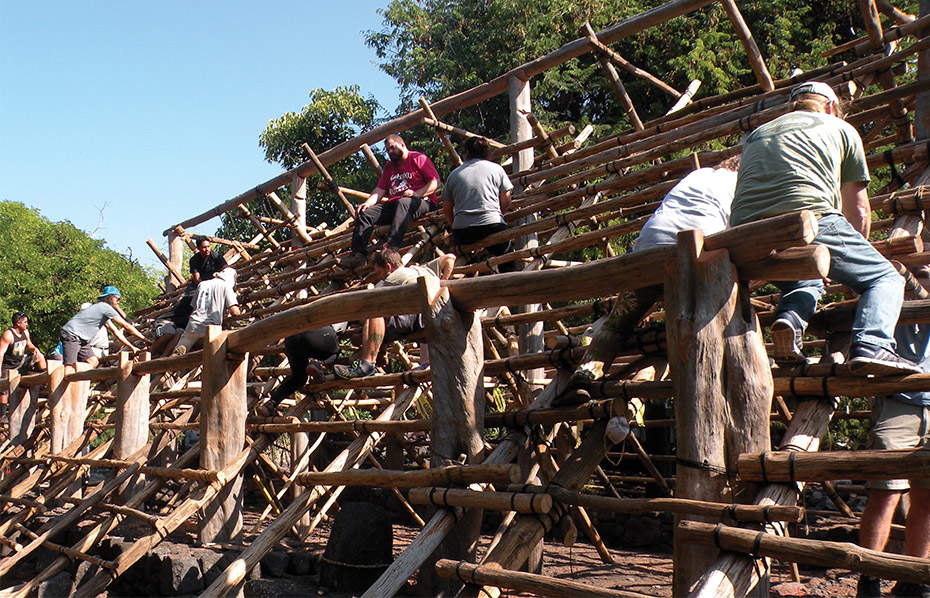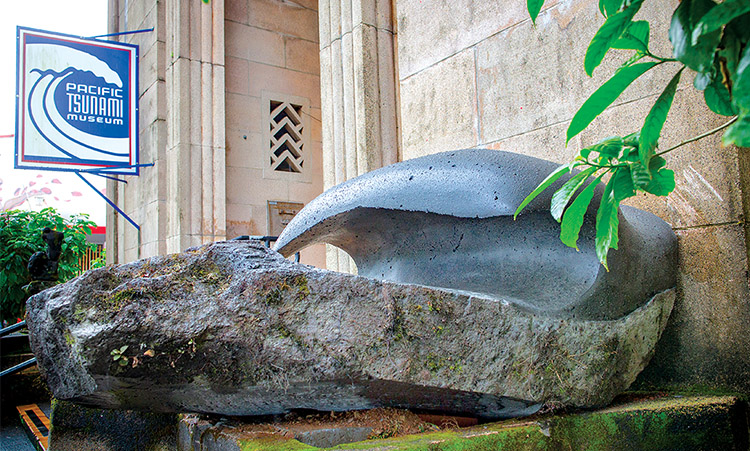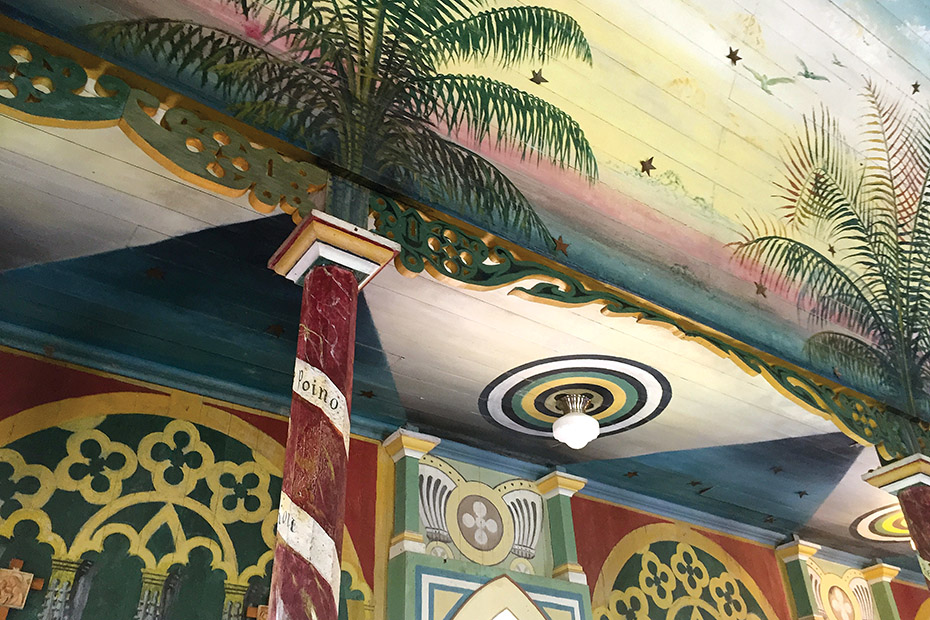
Hawai’i Island’s Famous “Painted Church”

By Denise Laitinen
An incredible example of American folk art, St. Benedict Catholic Church in Captain Cook is one of the most well-known and colorful churches on Hawai‘i Island. Tucked into the slopes of Mauna Loa among coffee farms above Hōnaunau Bay, the church has been drawing the religious and the curious alike for more than a century. People come to see the incredible murals that adorn the inside of the church walls, ceiling, and altar—works of art so famous that the church is commonly called the Painted Church. Even the road the church is located on is called Painted Church Road.
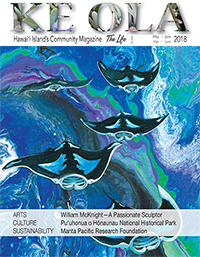
However, the church did not start out high on the hill. In the 1840s, a smaller church was built along the shoreline. “Church records go back to 1872, so we can assume the beach church was in existence at that time,” says Marjorie Fujimoto, a long-time Kealakekua resident. Marjorie was baptized in the church, as was her grandmother, and her family has ties to the church dating back to the 1870s.
“The chapel on the beach was called St. Regis, probably because the priest that gave sermons there was named Regis,” explains Marjorie.
By the mid-1880s, many residents along the shoreline had moved mauka (mountain side) to where the soil was more fertile. In 1899, Father John Berchmans Velghe became the pastor of the church and moved the church uphill to its current location. The church grounds, which include an adjoining cemetery and meeting room, offer commanding views of Hōnaunau and Kealakekua Bays.
Renamed St. Benedict Catholic Church, the new church was blessed in 1902. “There never was an explanation of why it was renamed to St. Benedict when it was moved upland,” says Marjorie.
A self-taught artist, Father Velghe set about painting murals inside the church that same year. He sketched Bible scenes on sheets of tracing paper and hung them in the church, tracing their outline and then painting them. The scenes were designed and painted in a style reminiscent of a European gothic cathedral.
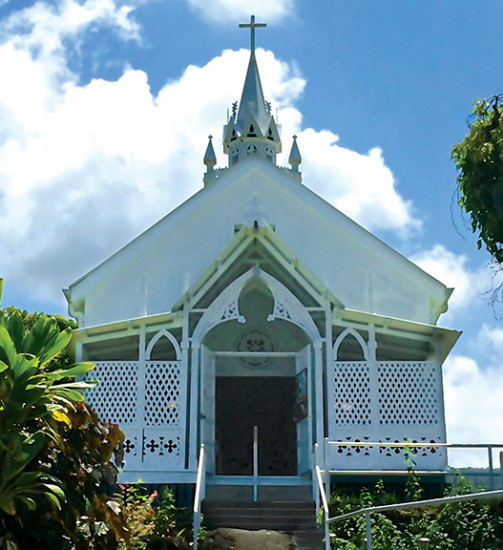
Murals include images of Cain and Abel, the stigmata of St. Francis of Assisi, Christ rejecting the devil, and others. Given the language barrier between the foreign-born priest and the Hawaiian-speaking parishioners, the art helped the priest convey his teaching to the congregation.
“How he painted [theses scenes] from memory is amazing,” says Marjorie. “He painted them with regular house paint and the murals have never been retouched since he painted them.”
Father Velghe did not stop with scenes from the Bible. Six pillars lining the church aisles are painted and adorned with Bible verses translated from Latin to Hawaiian. Atop the pillars, palm fronds are painted extending onto the ceiling as if they were palm trees. The ceiling itself is painted as a pale blue sky complete with stars, clouds, and birds. The mural on the wall behind the altar gives the illusion of a grand European cathedral with towering pillars extending deep into the recesses with a light at the center.
For two years Father Velghe painted the interior of the church. He had not quite finished all the murals by 1904 when he was transferred to another parish and subsequent health issues forced him to return to his native Belgium. Meanwhile in Hawai‘i, word quickly spread about the stunning frescoes and shortly thereafter the church became known as the “Painted Church.”
Considered an impressive example of American folk art, the paintings have inspired other clergy in similar efforts.
Star of the Sea Church in Kalapana is another Catholic church celebrated for its murals, created by a self-taught priest from Belgium, Father Evarist Gielan. Father Gielan reportedly drew inspiration from Father Velghe’s work at St. Benedict’s. [See Ke Ola issue Nov/Dec 2015 for an article on the Star of the Sea Painted Church.]

Hawai‘i’s most famous Catholic priest, Saint Damien, was also from Belgium. Saint Damien started his career as a priest on Hawai‘i Island, founding several churches in the Kalapana area before heading to Moloka‘i where his work with those suffering from Hansen’s disease (leprosy) led to his sainthood.
A statue of Saint Damien stands near the front entrance of St. Benedict Catholic Church. “The statue was erected in 1985 as a remembrance of the work he did with the leprosy colony on Moloka‘i and all the good work he did,” explains Marjorie. “It serves as a model for our parishioners to follow.”
Active Parish
St. Benedict Church, originally built to hold around 100 people, has not changed in size since it was completed. It serves as a parish (main) church to nearby St. John the Baptist Church, which means the priest who serves St. Benedict’s also oversees all the church services and activities for St. John’s. According to Marjorie, about 200 members attend Sunday services between the two churches.

As part of the Roman Catholic Church under the jurisdiction of the Diocese of Honolulu, the diocese assigns priests to the church, who come from around the world and usually serve a term of three years.
“Many of our priests come from South America or the Philippines,” says Marjorie, adding that some priests are born in Hawai‘i. Currently, Rev. Ornoldo Cherrez of Ecuador serves as the parish administrator, a position he has held since 2016.
St. Benedict’s parish remains quite active with morning mass held Tuesdays, Thursdays, and Fridays at 7am, plus a mass on Saturday afternoon and Sunday morning. A Hawaiian language mass is held the second Sunday of the month.
Its outreach programs include a hospital ministry, where church members visit patients in the hospitals, and a homebound ministry that visits parishioners unable to attend church. For more than 25 years the church has also operated a food pantry on the second, third, and fourth Fridays of the month. However, as this issue went to print the food pantry is not operating because the food director retired and the church is seeking a new director to manage the program.
There is also a very active youth program that encompasses religious education (commonly called Sunday school) and a youth ministry. About 80 students are involved in the church’s youth programs.
A Major Tourist Destination
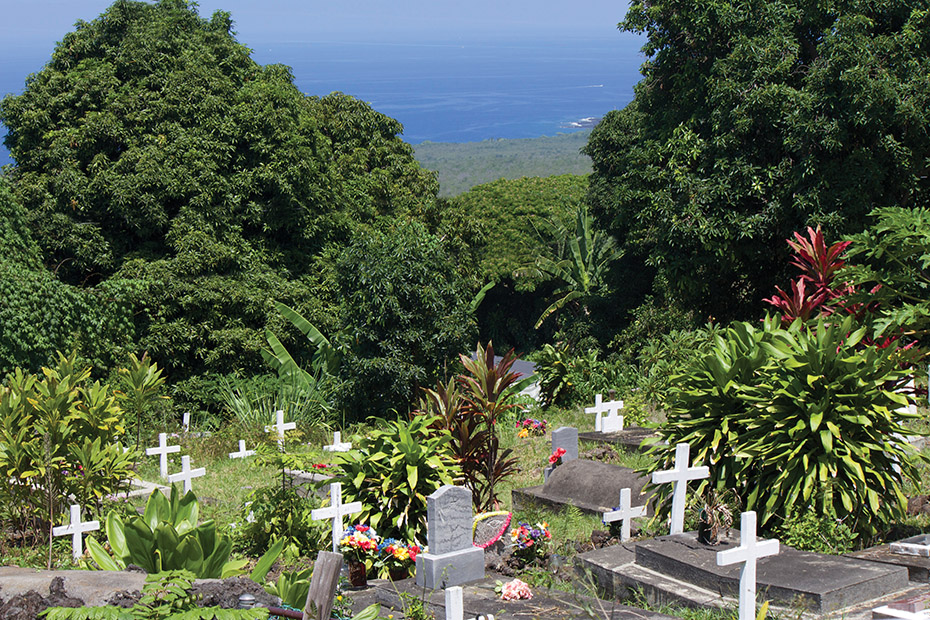
In addition to being an active, operating church, the tiny parish is a major tourist destination. Throngs of visitors have been flocking to see the amazing artwork for 114 years.
Marjorie, who worked for the church office for many years, says that by the time she retired in 2002, the church was attracting 40,000 visitors a year. Although current attendance records aren’t kept, one can only assume those numbers have increased dramatically given the rise in tourism to Hawai‘i Island in recent years.
These days, upwards of eight busloads of tourists visit the church every Wednesday when cruise ships dock at nearby Kailua-Kona. Additional tour companies visit regularly throughout the week, as do independent visitors exploring West Hawai‘i.
The church does not receive direct compensation from the many tour companies nor does it charge an admission fee. “The only charge we have is a postcard that’s for sale and we have never prevented people from taking pictures inside the church,” explains Marjorie. “It’s up to individual tourists if they want to donate.
“For us, it is God’s gift. We share it with everybody.”
In Need of Restoration
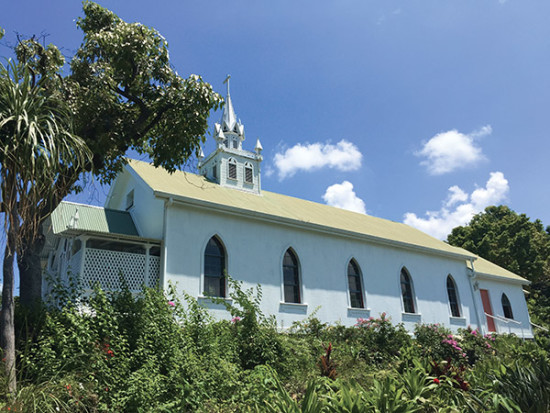
While the church is known for its aloha and warm hospitality, it simultaneously struggles with preserving the very artwork that made it famous.
Listed on the Hawai‘i State Register of Historical Places and the National Register of Historic Places, the parish is required to maintain the church and its grounds.
“We’ve had it refurbished outside,” says Marjorie. “We have a donation box, but even with that it’s hard to keep up with repairs so we are always looking for ways to generate funds.”
Given that the murals have never been retouched since they were completed in 1904, the restoration of the frescos would be a very large expense for the church. Built of wood, the church must also contend with termite damage and other issues, such as replacing the steeple and maintaining the grounds.
As the church struggles with upkeep, it continues to welcome visitors and pursue its mission to fulfill the gospel of Christ. Open for viewing seven days a week from 8am to 5pm, “People can come in and view it after mass,” says Marjorie. “Sometimes there are docents to provide tours, but it depends on the volunteers’ schedules, otherwise it is self-guided tours.” ❖
For more information: 808.328.2227
Donations for preserving the church can be sent to:
St. Benedict Catholic Church
84-5140 Painted Church Rd., Captain Cook, HI 96704
Photos by Denise Laitinen
Mahalo Clark Realty Corp. – Home/Building Story Sponsor
